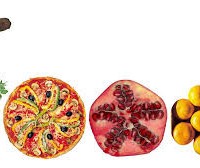What the new nutrition label mean to you?
In the first major overhaul of the Nutrition Facts Panel since 1993, the Food and Drug Administration announced Friday changes that will be made to the Panel over the next two to three years. The Academy of Nutrition and Dietetics and its member registered dietitian nutritionists have analyzed the changes to assist consumers in understanding the new Panel and what they mean for people's healthful eating plans.
"We applaud the FDA and are thrilled that the new Panel largely aligns with recommendations the Academy submitted to the FDA to help everyone make more informed and nutritious decisions when choosing foods to fit their lifestyles and needs," said registered dietitian nutritionist and Academy Spokesperson Lori Zanini. "The new Panel better reflects serving size, nutrients and ingredients that people should focus on, and it updates current percent of Daily Values."
Zanini breaks down the new Nutrition Facts Panel and the changes announced by the FDA:
Serving Size
"Our understanding of a 'serving size' has changed over the years. The new Panel now lists serving size as what is typically eaten in one sitting. This new format will help by easing or even eliminating the need to multiply several servings and daily value percentages to know how much has been consumed," Zanini said..
For instance, the serving size on a 12-ounce beverage will now be listed as one serving, since a person typically drinks the whole amount at one time. "People should also know that the serving size does not necessarily reflect the recommended portion size. The MyPlate guidelines are a great resource for understanding proper portion sizes," Zanini said.
Nutrients and Ingredients
Several changes to the label have been made to better reflect people's adequate, under- or over-consumption of vitamins, nutrients and ingredients:
- Vitamin A and C will no longer be listed on the label because, in general, Americans do not have difficulty getting the recommended amounts of these vitamins.
- Vitamin D and potassium will now be listed, since they are two key nutrients Americans need for bone and heart health, respectively. "Many people do not consume these nutrients in sufficient amounts," Zanini said.
- The 2015-2020 Dietary Guidelines for Americans call for a reduction in the amount of added sugars Americans consume. "To provide a better understanding of naturally occurring versus sugars that are added to a product, Added Sugars will now be listed as an indented sub-item under Total Sugars," Zanini said.
Percent of Daily Values
"The percent Daily Values (DV) help evaluate how a particular food fits into a person's daily meal plan," Zanini said. With the newly adjusted serving sizes on the Nutrition Facts Panel, percent Daily Values will be easier to calculate:
- Daily Values are average levels of nutrients for a person eating 2,000 calories a day. A food item with a 5 percent DV of sodium provides 5 percent of the total sodium that the person should eat each day.
- Percent DV are for the entire day, not just one meal or snack.
- Aim for high DVs (20 percent or more) in vitamins and minerals, such as vitamin D and potassium and low (5 percent or less) in added sugars and sodium.
- Following the Dietary Guidelines, the updated percent Daily Value for added sugar is based on the recommendation that daily intake of calories from added sugar not exceed 10 percent of total calories.
"While fully understanding the Nutrition Fact Panel can be confusing, many grocery stores now have registered dietitian nutritionists on staff to help their customers understand how to read labels and select the right foods for their customers' healthy eating plans," Zanini said. "The Academy urges the FDA to create educational campaigns that will help all Americans understand the Panel and make healthful choices when they shop."
To learn more about the Nutrition Facts Panel and to find a registered dietitian nutritionist, visit www.eatright.org.
The Academy of Nutrition and Dietetics is the world's largest organization of food and nutrition professionals. The Academy is committed to improving the nation's health and advancing the profession of dietetics through research, education and advocacy. Visit the Academy at www.eatright.org.

